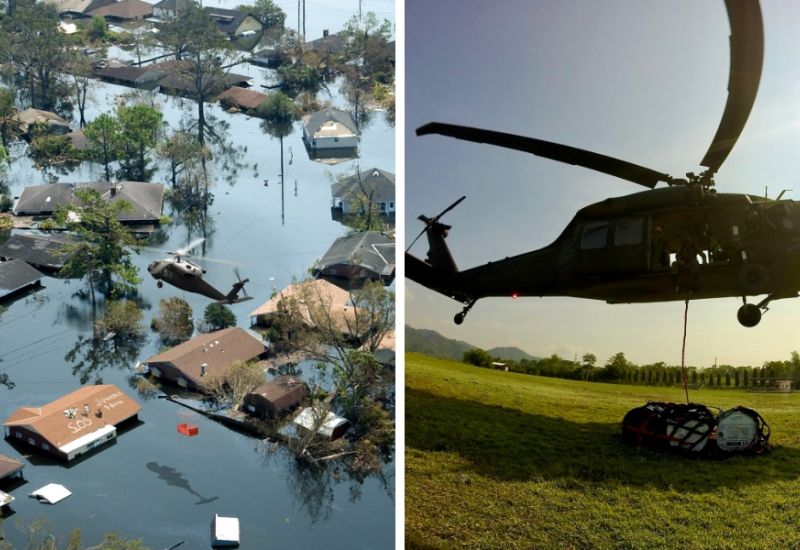MULTI PERSON HELICOPTER RESCUE AND HELICOPTER EXTERNAL LOAD OPERATIONS IN DISASTER RELIEF
Natural disasters strike with little or no warning and often cause widespread devastation and loss of life. Hurricanes and Typhoons will sometimes be forecast a couple of days in advance, but earthquakes, Tsunamis and general flooding usually occur with no warnings at all.
One of the consequences of natural disasters is that they often cut of whole communities and regions. Roads and railways are often cut in half, rivers burst their banks, dams break causing widespread flooding
3 Million People Were Affected
On 12 January 2010 a magnitude 7.0 earthquake hit the island of Hispaniola; an island comprising the countries of Haiti and Dominican Republic.

The most severely affected was Haiti on the Western side of the island with an estimated death toll of more than 300,000 people. Hundreds of thousands were displaced in what was already, one of the poorest countries on earth.
In the aftermath of the quake, efforts by citizens and international aid organizations to provide medical assistance, food, and water to survivors were hampered by the failure of the electric power system (which already was unreliable), loss of communication lines, and roads blocked with debris. A week after the event, little aid had reached beyond Port-au-Prince. Read More Here.
It is estimated that three million people (one third of the county’s entire population) were affected by the earthquake.

The collapse of transport infrastructure means that even those that survive the initial disaster often perish do to the lack of medical supplies, clean water, food, and shelter. With roads, railways and bridges no longer useable, even where adequate rescue services are available, they often cannot reach the most vulnerable and injured.
Time is Often the Critical Factor
Helicopters therefore play a pivotal role in disaster relief and rescue operations.
Large scale disaster relief often involves two separate operations; getting equipment, personnel and supplies into the effected region, then evacuating vulnerable and injured personnel from worst affected areas.
Time is often the critical factor. The longer it takes for support and medical supplies to arrive in the affected area, and the longer it then takes to evacuate the critically injured, the higher the inevitable death toll.
Governments and aid agencies therefore need to pre plan their disaster response protocols. Bearing in mind that critical transport infrastructure is often damaged and unusable during the first hours and day after the event, having the ability to use helicopters with the ability and capacity to airlift supplies and medical trained personnel into the worst affected areas, and then to airlift the critically injured out in a timely and efficient process is key to saving lives.
The Heli-Basket
Equipment such as the Heli-Basket HB2000 Multi Person Helicopter Rescue system allows for over 2,000kgs of equipment and aid to be flown into stranded communities, whilst also providing the means to airlift up to 15 injured and vulnerable people out of those areas within the same lift cycle. This can save significant time during the first critical hours after the disaster hits, which in turn, can help to save more lives.

Training for these types of support and aid operations is also critical. Integral Risk Global offers high value training courses in Multi Person Helicopter Rescue and helicopter external load operations; skills critical in providing safe, efficient and effective disaster relief emergency operations.
